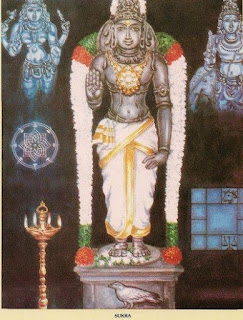Charaka Samhita
The Charaka Samhita is believed to have arisen around 400-200 BCE. It is felt to be one of the oldest and the most important ancient authoritative writings on Ayurveda. It is not known who this person was or, if indeed, this represents the work of a "school of thought." It could have been from a group of scholars or followers of a man known as Charaka or an original composition from a single person named Charaka. This work is sometimes considered a redaction of an older and more voluminous work, Agnivesha Samhita (46,000 verses), which is no longer extant. Dridhabala, living about 400 AD, is believed to have filled in many verses of missing text (perhaps up to 20%) in the Chikitsasthana and elsewhere, which disappeared over time.
The language of Charaka is Sanskrit and its style is poetry, with meter and melody. Poetry was known to serve as a memory aid. For example, Charaka contains over 8,400 metrical verses, which are often committed to memory, in toto, by modern medical students of Ayurveda.
It presents most of the theoretical edifice of Ayurveda and concentrates on the branch of Ayurveda called kayachikitsa (internal medicine). This is largely the theory of the internal fire--of digestion--or internal medicine, in modern terms. Charaka never discusses the sub-types of pitta and kapha, but does list and describe the 5 sub-types of vata.
Seen from a greater perspective, this work seems to represent a certain value of consciousness that is different from other works. It gives more discussion about the notion that life is fundamentally a field of intelligence and pure knowledge. This field is self-aware; it is the Knower as well as the object of perception, and for Charaka this is part of what is to be treated by the physician.



Comments
Post a Comment